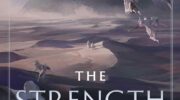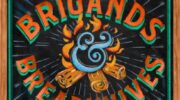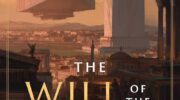A Warrior’s Path by Davis Ashura
E-book Edition
Published December 29th 2013 by DuSum Publishing
Review copy provided by author.
Review by N. E. White.
 Mr. Davis Ashura’s debut novel, A Warrior’s Path – Book One: The Castes and the Out Castes, is told from the point of view of several characters. The first we are introduced to is Rukh Shekton and his cousins out on their first, their virgin, mission across the monster-ridden spaces between protected cities. Their caravan is about to be attacked by those monsters, the Chimera, creatures cobbled together from different parts of other animals by an insane god, Suwraith. The troop, hundreds strong, prepare to outrun the Chimeras. They discard their wagons and any gear not necessary for survival. Scouts are dispatched and a small contingent sent back to Asoka (their destination) to relay events.
Mr. Davis Ashura’s debut novel, A Warrior’s Path – Book One: The Castes and the Out Castes, is told from the point of view of several characters. The first we are introduced to is Rukh Shekton and his cousins out on their first, their virgin, mission across the monster-ridden spaces between protected cities. Their caravan is about to be attacked by those monsters, the Chimera, creatures cobbled together from different parts of other animals by an insane god, Suwraith. The troop, hundreds strong, prepare to outrun the Chimeras. They discard their wagons and any gear not necessary for survival. Scouts are dispatched and a small contingent sent back to Asoka (their destination) to relay events.
As they gear burns, we learn (through a flashback) that Rukh is not any ordinary soldier, but a champion among the battle bred and trained, the Kummas. Despite this, or maybe because of it, his troop is hunted down by the Chimera and slaughtered. Rukh along with his two cousins, of the same warrior caste Kummas, and another from a caste that can blend, the Rahail, are among the few survivors.
But they are now tainted. While fighting for their lives, they did the impossible and joined forces with each other when they should have not been able to. Each caste has a special skill that belongs to those of their caste only. The Kummas shoot fire from their hands, can shield themselves from blasts, and move speeds so fast most non-Kummas can not track their movement. Of course, Kummas make up the vast portion of the fighting ranks. But the Rahail also have a skill. They can blend with their surroundings, making it easy to elude the notice of the Chimeras. Together, by passing their skills from one caste to the other, the four were able to survive. However, the sharing of those special skills means the young men are tainted and would most likely exiled for tainting their caste.
Not only is the sharing of skills forbidden, but also sexual mingling between the castes. In the next section of the book, we shift from Rukh’s story to his sister’s, Bree’s, story and his adopted-brother’s, Jaresh’s, story – who happens to be a Sentya. His story begins with a fight between himself and a Kumma who insulted his step-sister, Bree. Jaresh should have lost. His caste is bred for focus and intelligence, not fighting. But somehow he becomes the unlikely hero. But there is no celebration, for he not only beat the Kumma, but killed him. He is put on trial, not just for killing a man, but for the taint that is on him and his house’s name for mixing the castes.
Confused yet? Hold on, there’s more.
We also get introduced to the Outcastes, those unlucky to fall in love with someone from another caste and their unfortunate offspring. These are impure folk that have been turned out of the cities to suffer the fate of the Chimeras, a bloody death. But unknown to the castes living in the protected cities, they have scratched out a living among the wastelands.
In addition, there are those within the city walls that follow the insane god, Suwraith. They are called the Sil Lor Kum and rather than follow the gods who protect the human castes and marked out which talent belongs to whom, they listen to the orders of Suwraith and betray their own castes to gain power and luxuries.
Their individual stories are woven together to form a narrative that is both entertaining and a bit cumbersome. I picked up and put down this book several times, intending not to continue reading it. Once I got past the first few sections, I’d been inundated with so much backstory and world-building, I simply kept reading because I invested so much energy trying to keep all the names straight, I thought I owed it to myself to just keep trying.
I’m glad I did.
The story’s pacing does pick up in chapter three. Maybe this is where the book should have started. Regardless, the story of the Shektan family is intriguing. There’s romance, drama, and mystery in equal measure throughout the book as well as some interesting magic. In addition, the Chimeras are a frightening and worthy adversary; grotesque creatures that only a mad god can love. And that god is exponentially terrifying. How can you reason with a god, let alone a crazy one?
I was also interested in the author’s use on the societal caste idea. Similar to India’s historic caste system, the people in this world are divided. Not only is one’s magical talent or skill defined by your caste, by birth, but so is one’s physical appearance. Breeding between castes is not allowed, so those among a certain caste have very similar physical traits. While the use of this rigid caste system might be off-putting (it was for me, at first) and heavy-handed (it is), I think the author uses it well to tell his story of finding one’s own path regardless of what the world tells you to do.
However, there are more significant problems with this book. The beginning is festooned with massive info-dumps and lengthy descriptions of each person and their caste abilities and traits. It got a bit hard to follow. I often had to backtrack a few paragraphs to remind myself what it was that was going on before the author made a tangent into the world’s history. Another thing I found really annoying was the swearing.
Wait, back up.
Anyone who knows me, knows I don’t mind swearing in my fiction. As long as it serves the story and is true to the characters, a bit of swearing is fine. I guess, it wasn’t the fact that there was swearing in this book that was annoying to me, but how the swearing was done. The author used “fragging” instead of the word we all know the character would say.
Which leads to a wider problem in the book.
While describing locations, the author often resorted to using our world-specific descriptors (i.e., knotty-pine paneling, firefly lamp, hurricane vases, etc). As far as I can tell, this book’s story-world is not a far flung futuristic setting on earth (our primary world), but rather a fictional, secondary world. So, why use ‘bastard’ freely, but not the f-word? Put another way, if the author was willing to use specific details like knotty-pine, then why not the f-word? Why change it to “fragging”?
Every time I saw “fragging” (which gets used a lot), I mentally rolled my eyes and thought, just use the word you want to use. For my part, use world specific-terminology or not. Waffling between the two just annoyed me. I know, this complaint seems petty, but the specific use of language did pull me out of the story several times.
If these two problems (the info-dumps and the swearing) were the only problems, I wouldn’t even mention them, but then there’s the fact that the book ends with a cliffhanger, there are a couple of deus ex machina moments, and a host of typos that regularly tripped me up.
It may seem that I do not like this book. But despite all my complaints, A Warrior’s Path, at its core, has some interesting and worthy characters. And the themes the book explores, racial unity, reaching beyond societal norms, and even a bit of faith, are relevant to a reader like me. I found myself drawn to each character’s plight, even the crazy god and the leader of the evil Sil Lor Kum.
Should you read it? I’ll let you decide. I know I am interested to see this story to its end.
N.E. White, February 2014.
Copyright © sffworld.com. If quoted, please credit “sffworld.com, name of reviewer”.





Hi Nila,
Thank you so much for the review! I thought it was very fair, and I’m sorry I haven’t thanked you for doing this review any sooner, but life got in the way.
I’m glad you were able to enjoy the book after getting past the first few chapters. The beginning of any epic fantasy can be rough, and it’s often a very tricky section. I don’t like infodumps myself, but in writing A Warrior’s Path, I found myself in a delicate state, trying to balance out the need to give critical information to a reader with the spectre of the narrative seeming like a textbook. With Arisa, it was especially hard since I was creating such a different societal structure from what most fantasy readers might be used to. As you said, the society that exists on Arisa is complex. It isn’t Anglo-Saxon/Medieval, and getting that across is hard. For some people, the information in the first few chapters was critical, but even then, the glossary at the end was given a workout. For others, those early chapters were a tedious slog aka infodump.
I know you didn’t like the word ‘fragging’, but it’s really just a tip of my hat to Battlestar Galactica (fracking) as well as intentionally using an old military term that better alludes to what I was trying to imply in such a martial world. I even used F-bombs in one draft, and the manuscript just didn’t read the way I wanted.
There are other instances where names or settings are pulled from the real world. For instance, Jubilee Hills in Ashoka (ancient Indian Emperor) is where my grandparents actually live in Andhra Pradesh, India. Or the name ‘Hal’El’, which was a fun little nod to pop culture. Watch Happy Gilmore to figure out the reference.
The typos…oy. I thought I had gotten rid of most every one of them when I published the fragging (sorry, I couldn’t help it 🙂 ) book. Seven times I read the manuscript, and I figured I MUST have gotten them all by then. I hadn’t – obviously – but a very nice editor was kind enough to do a proofread for me. I have now updated the manuscript (it’s free to anyone who has already purchased the book), so the most recent edition is a lot cleaner – I stopped counting the number of typos I was fixing when I reached 25. As I said…oy.
Thanks again!
You’re welcome, Davis. 🙂